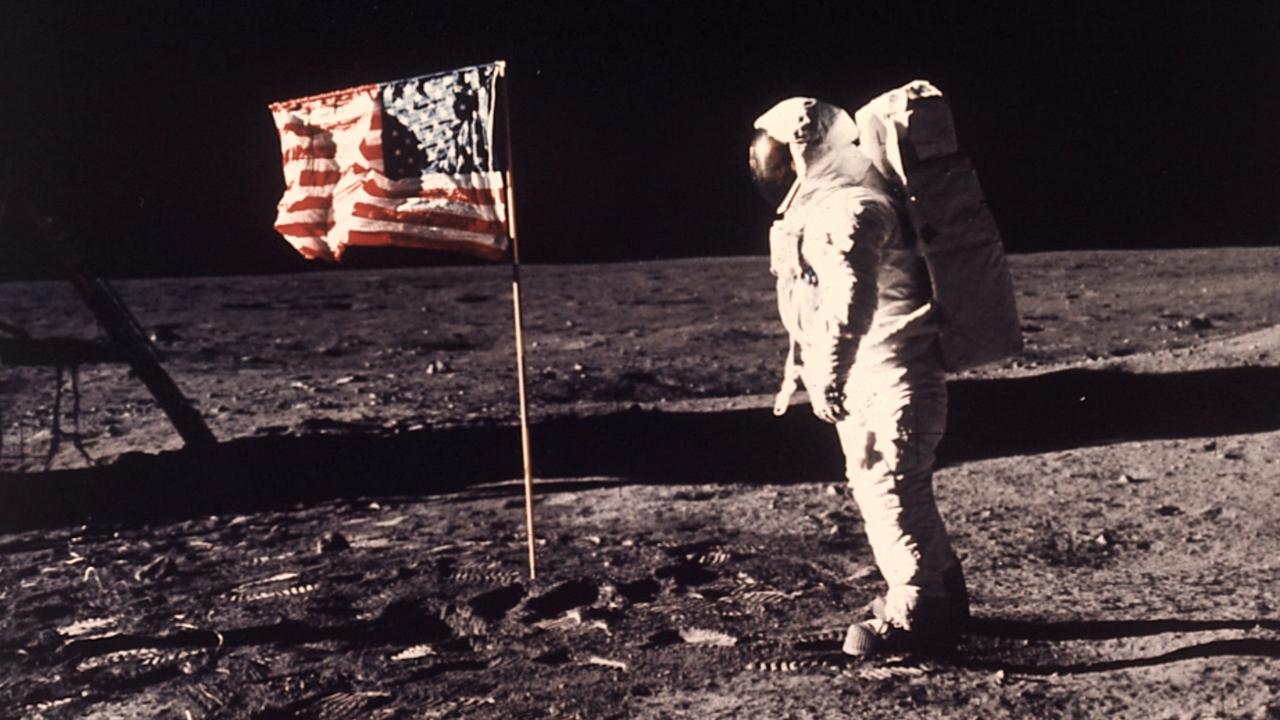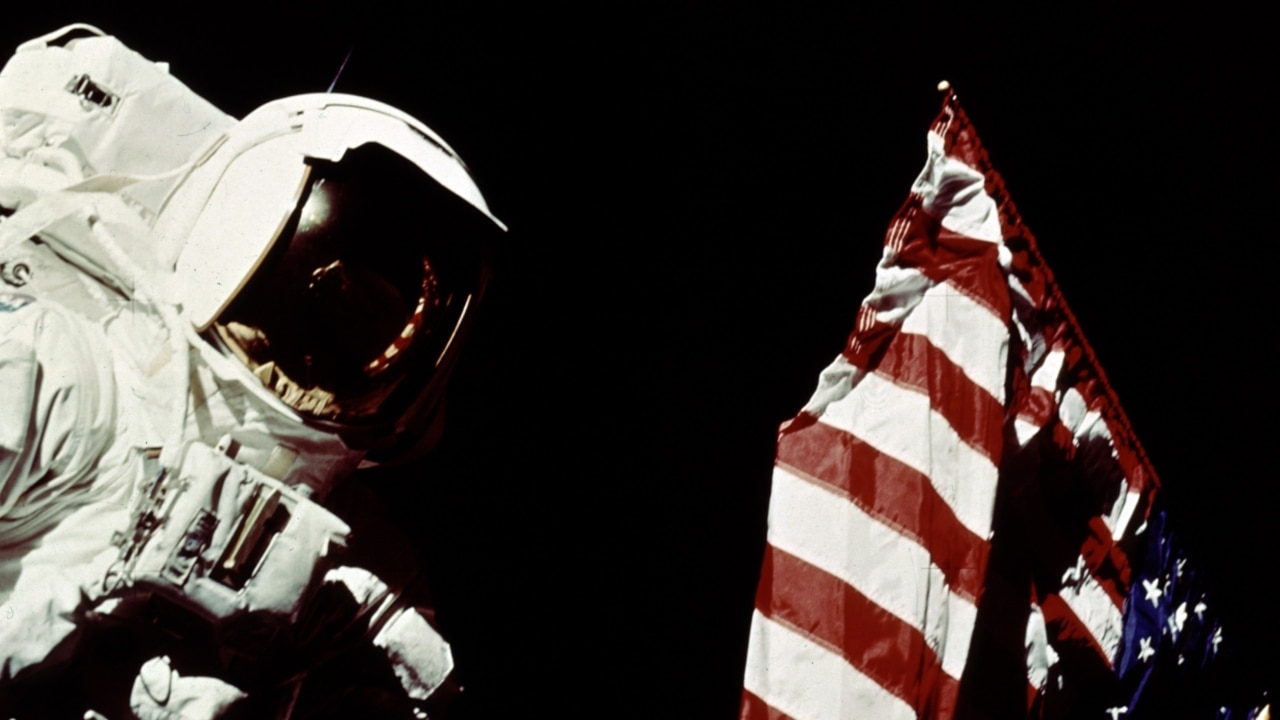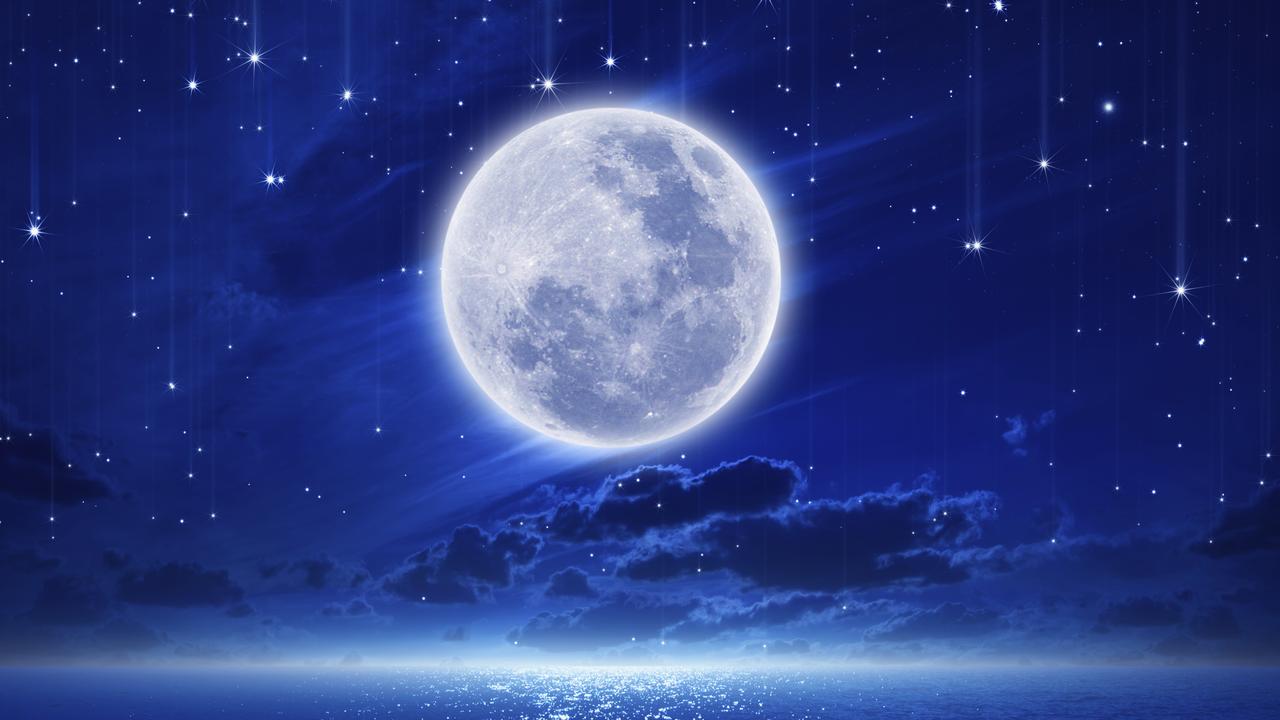Conspiracy theories that NASA faked landing on the moon have raged since 1969. Are they right?
Conspiracy theories that NASA faked landing on the moon have been popular since 1969. We look at some of the arguments and what the Americans say about them

READING LEVEL: GREEN
Neil Armstrong and Buzz Aldrin stunned the world when they appeared on TV screens in 1969 bouncing around on the moon’s surface. Many people could not believe what they were seeing.
The US launched several more Apollo missions, landing on the moon six times before the program ended in 1972.
But some people don’t believe humans ever walked on the moon.
The suggestion that the landings were faked has grown in popularity, with between 6 per cent and 20 per cent of Americans now believing the US has never landed on the lunar surface.
Conspiracy theorists* believe it was too expensive and too dangerous to land on the moon so instead of flying there, NASA filmed a series of fake moon landings in a studio, complete with props, costumes and a code of silence*.
Here we look at the reasons why critics believe the moon landing was faked.
1. Photo of the flag
The photograph of the astronauts planting the American flag on the moon has raised the most suspicion.
Critics say the flag’s movement shows the presence of wind, which is impossible in a vacuum* on the moon.
The flag had a rod inserted along the top edge to make it stand out, but you can clearly see creases in the flag which look like a billowing* movement.
There is no breeze on the moon. There is no air in the atmosphere and therefore no wind to help the flag flutter.
NASA has responded to this conspiracy theory saying Aldrin was twisting the flagpole to place it in the moon’s soil, which caused the flag to move.
2. No stars
Conspiracy theorists say pictures of the moon’s landscapes show there are no stars in the sky — it’s just a big black void*.
They claim there are no clouds on the moon so therefore stars should be constantly visible and incredibly bright.
They say NASA’s argument that the photos are low quality and therefore the stars are washed out doesn’t add up, given that some of the photographs are incredibly high quality and yet still no stars shine.
3. Slow-motion moon walking
Those who believe the landing was real say filming the moon’s low-gravity conditions on the moon would be impossible to fake in a studio.
But critics say the Americans simply slowed down the regular footage of the astronauts walking and bouncing around the studio.
They claim if you take the film and increase the speed 2.5 times, the “space walkers” are clearly moving in normal Earth gravity.
They also claim the high bounces and jumps could easily have been achieved using wires.
4. Shadows
Another argument against the moon landings being real has to do with shadows.
Conspiracy theorists ask “if the Sun is the only source of light, why do some shadows appear to point in multiple directions?”
NASA says a rough, uneven surface can cause all sorts of shadows at different angles, even with a single light source like the Sun.
5. No blast crater
Conspiracy theorists claim there should be a blast crater* on the surface of the moon where the Eagle lunar module landed.
NASA says the Eagle landed on solid rock with a thin covering of moon dust and the amount of thrust (power) during the landing was very low and not strong enough to cause a crater.

6. Footprints
Critics say the footprints left on the moon look like they are made in wet sand and ask why would astronauts’ boots make footprints when there’s no water on the moon?
NASA responded saying the lack of wind on the moon meant the footprints made in fine, dry lunar dust weren’t blown away.
7. The Van Allen radiation belts
These are two huge belts of radiation* that surround the Earth and it’s been claimed that humans couldn’t have passed through these belts without being killed by lethal doses of radiation.
NASA said it made sure the Apollo 11 spacecraft was well insulated* and the average dose of radiation over the 12-day mission was just 0.18 rads*, or similar to the radiation dosage from a chest X-ray.
What do Neil Armstrong and Buzz Aldrin say?
Neil Armstrong was asked many times in his lifetime about the rumours of faked moon landings. On one occasion he chuckled: “It was never a concern to me because I know that one day somebody’s going to go fly back up there and pick up the camera that I left.”
Edwin “Buzz” Aldrin had a pointed answer when he was hassled by conspiracy theorist Bart Sibrel outside a Beverly Hills hotel in the US in 2002.
Sibrel, holding a Bible and asking Aldrin to swear on it, said, “You’re the one who said you walked on the moon when you didn’t . . . You’re a coward and a liar and a thief.”
Aldrin’s response? He punched him in the face.
Four years ago, Aldrin also responded to conspiracy theorists on Twitter saying: “The Russians would have exposed by now if we didn’t land. #Apollo 11.”

What does NASA say?
NASA has always responded to conspiracy theorists saying there is a significant amount of evidence to support NASA having landed 12 astronauts on the moon.
NASA says the best evidence is the 380kg of moon rocks collected by astronauts and studied by scientists around the world for decades.
NASA claims the rocks were clearly formed in an atmosphere lacking oxygen and water and they show major chemical differences from any previously known Earth rocks.
Other evidence includes the fact you can bounce Earth-based lasers off the retroreflector* mirrors placed on the lunar surface by the Apollo astronauts
In 2011, NASA released photographs taken by its Lunar Reconnaissance Orbiter that show the Apollo 12, 14 and 17 landing sites including vehicle tracks and astronaut footprints.
The images also show where the astronauts placed some of the scientific instruments that provided the first insight into the moon’s environment and interior.
GLOSSARY
- conspiracy theorists: those who believe a powerful organisation is behind unexplained events
- code of silence: agreement to remain silent about something
- vacuum: emptiness or a space without any matter
- billowing: filled with air and moving
- void: emptiness
- blast crater: a hole created by a landing spacecraft
- radiation: the release of energy as electromagnetic waves
- insulated: protected by material or a coating
- rads: a unit for measuring doses of radiation
- retroflector: a device or surface that reflects radiation or light back to its source with a minimum of scattering.
EXTRA READING
Part 9: Conspiracy theories suggest landing was a fake
Part 11: The race to return to the moon
QUICK QUIZ
- How many astronauts does NASA claim it has landed on the moon?
- What do conspiracy theorists say is wrong with the US flag?
- What do non-believers say are missing from the moon’s sky?
- What is the Van Allen radiation belt?
- How many kilograms of moon rocks does NASA say have been brought to Earth?
LISTEN TO THIS STORY
to come
CLASSROOM ACTIVITIES
Refer to the accompanying 50th Anniversary of the Moon Landing classroom workbook with 25 activities. Can be purchased for $5 including GST at https://kidsnews.myshopify.com/products/moon-landing
HAVE YOUR SAY: Do you believe the moon landing was real? Tell us why or why not?
No one-word answers. Use full sentences to explain your thinking. No comments will show until approved by editors.

